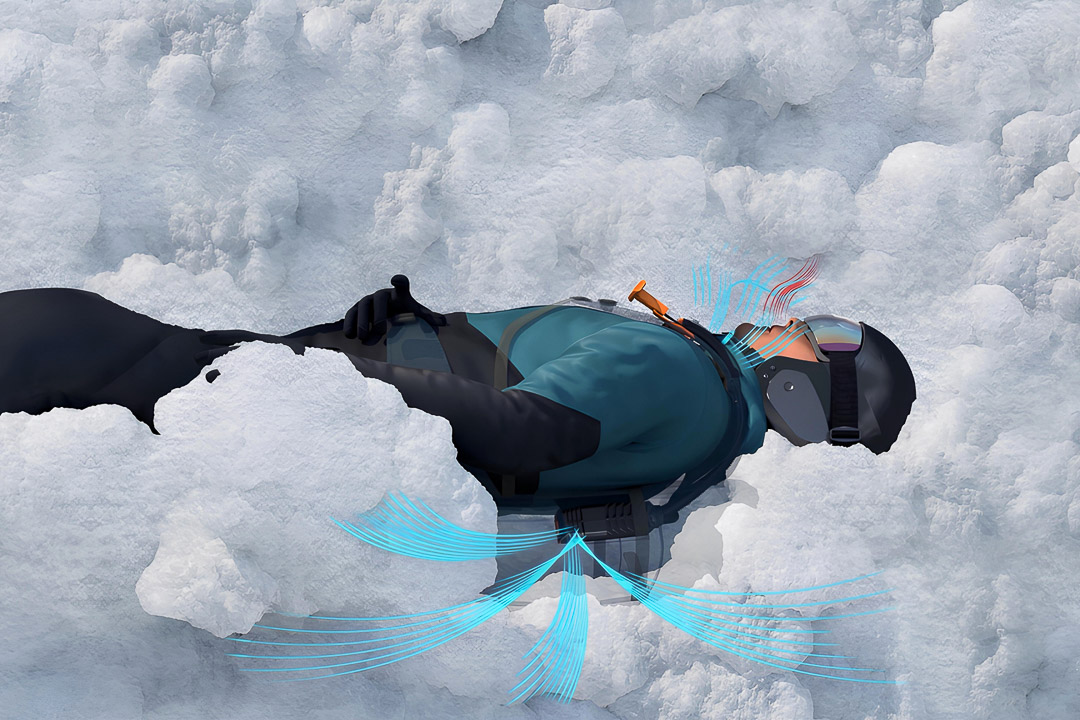When I imagine myself buried in an avalanche, I always imagine the moment of coming to rest, the weight of the snow cementing around me, the claustrophobia of that moment. I imagine, vainly, that I might be able to control my panic and slow my breathing, hoping that I can prolong my survival under the snow. I never find myself imagining that in the turmoil of getting taken for a ride, my mouth and nose might become packed with snow, and in that moment when the cement sets up, I might not even have the option to breathe.
Whether or not a buried avalanche victim’s mouth and nose, their airway, is packed with snowy debris is a critical feature for prediction of their survival. Airway occlusion prevents any gas exchange with the surrounding snowpack, and the primary killer of the buried avalanche victim, lack of oxygen (hypoxia), sets in within minutes. While avalanche victims have been recovered alive after multiple hours buried with a large air pocket around their face, no survival beyond 35 minutes has ever been reported for a burial with an occluded airway.
But how often is the airway of a buried victim actually plugged with snow?
Both old and new avalanche safety technologies aim to prolong survival under the snow. Both the older Black Diamond Avalung and the new Safeback SBX system aim to prevent death by hypoxia by improving gas exchange with the victim’s surroundings, but neither technology can be effective if the mouth and nose are blocked. To a certain degree, the viability of these technologies depends on the frequency of that blockage.
(Interestingly, I am not aware of any technology that attempts to prevent occlusion of the airway).

A new study from the Eurac research group attempts to answer the question: How often is the airway of the critically buried avalanche victim blocked? The group performed a systematic review and meta-analaysis of existing studies and case reports to examine airway patency in critically buried avalanche victims. They screened 4109 existing studies identified with an inclusive search strategy, further reviewed 154 of those that might be relevant to the question, and then aggregated the results of 24 relevant studies with a few extra sources of data to create a pool of 566 cases of buried avalanche victims to address the question of airway patency.





Leave a Reply
You must be logged in to post a comment.